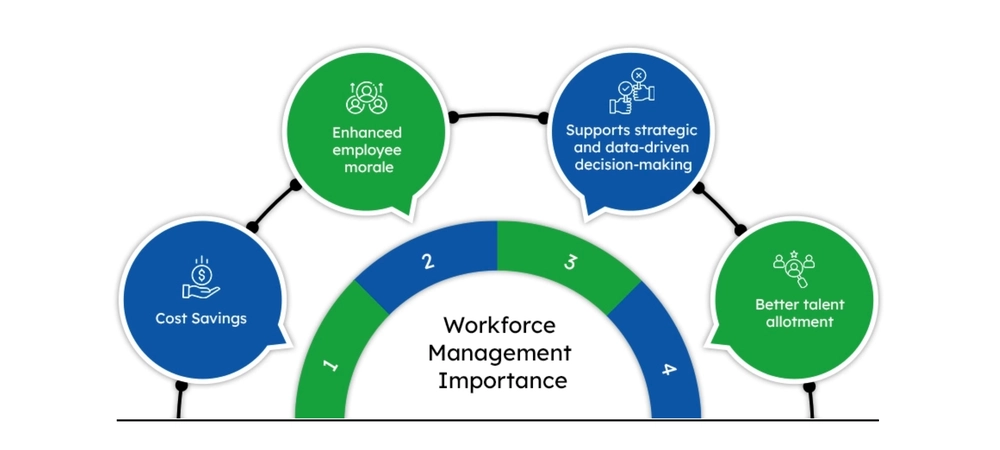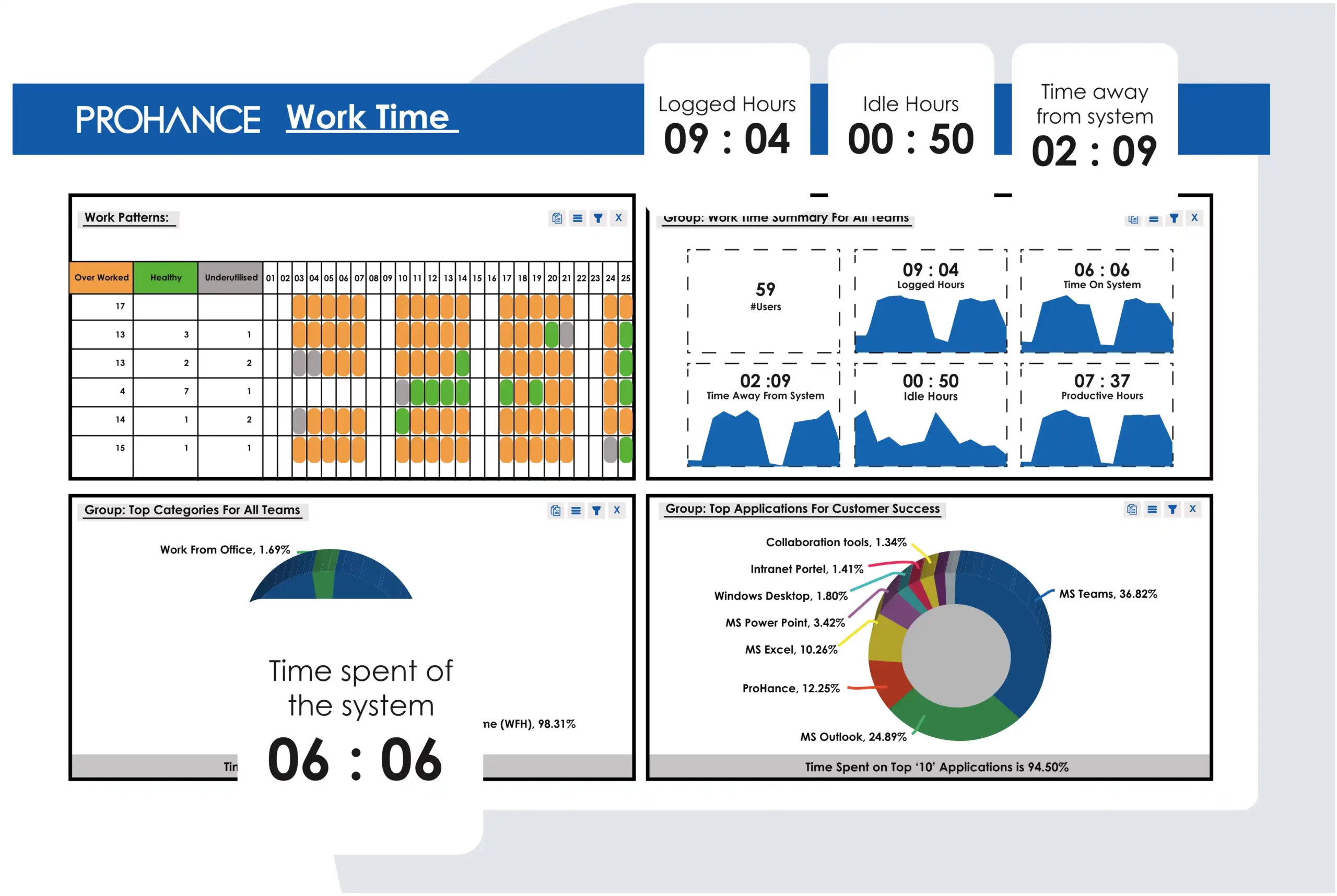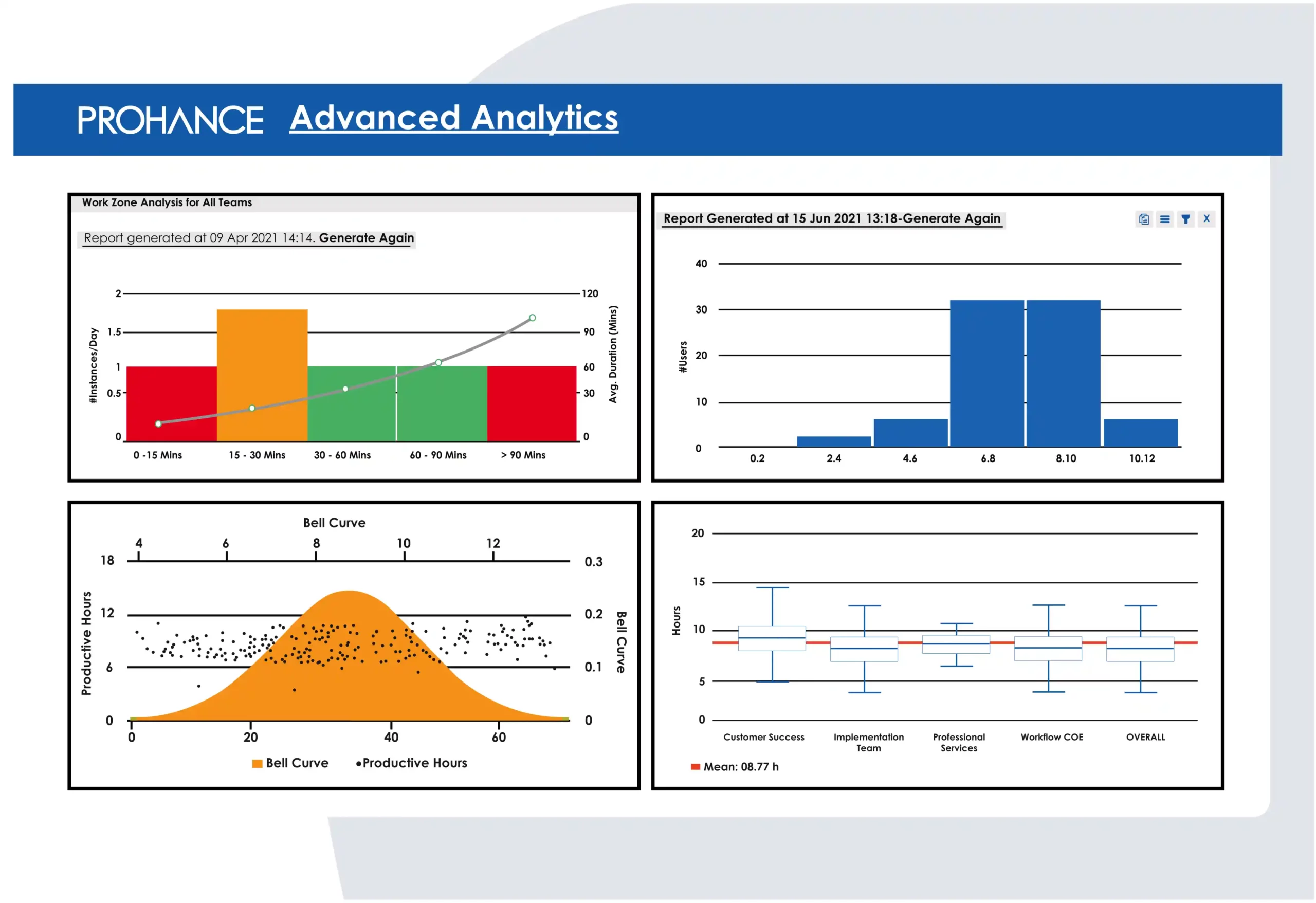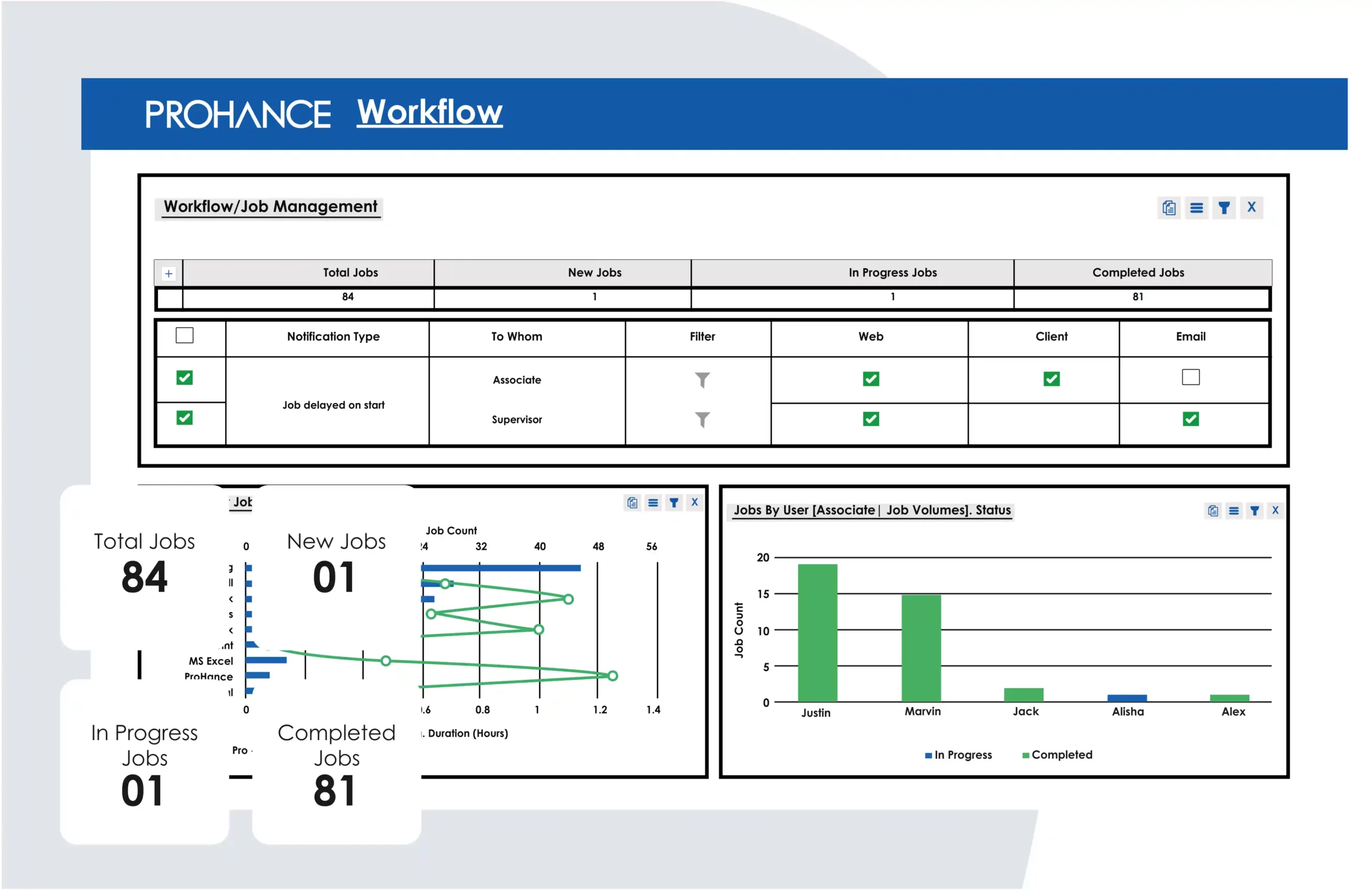Workforce Management Process: Definition, Modules, Benefits, and Tool for Implementation

Table of contents
Regardless of the industry, the American business landscape is driven by innovation and growth. And to ensure that your business propels to exceptional heights, you need efficient and smooth management of your workforce.
Your workforce is the lifeblood of your company. Therefore, its streamlined management sets the cornerstone for success. Unfortunately, many businesses don’t understand what workforce management is? And even if they do, they find themselves struggling to find the right tools and strategies.
Are you also finding it overwhelming to keep a tab on your employee activity and manage remote teams? This blog will talk about everything you need to know about efficient workforce management.
From highlighting the workforce management process to discussing its benefits- we’ll leave no stone unturned! So, let’s get started with some eye-opening statistics!
Challenges in workforce management
- 47% of HR teams highlight that talent retention and employee turnover is their biggest challenge. High turnover rates can lead to lost productivity and profits. When employees leave, businesses have to spend time and money recruiting and training new ones. This can disrupt operations and lead to lower productivity.
- A Gallup study released in early 2022 highlighted that 32% of full-time and part-time employees remain engaged in their jobs, while 17% show disengagement. Disengagement translates into unproductive work hours. Consequently, you’ll start noticing delays in projects and missed deadlines.
- Another blog highlights the unique challenges of managing a distributed workforce. In a distributed working system, 20% of workers struggle with loneliness, while 20% face problems in collaboration and communication, and another 18% experience difficulty in unplugging. This data was gathered from various sources such as Forbes, Bloomberg, Hubspot, and more.
The workforce management process is a comprehensive approach that takes on these challenges headfirst, offering not just answers but a roadmap to elevated productivity and streamlined workflows.
What is workforce management?
Every thriving business involves a symphony of processes that collectively shape its operational rhythm.
The workforce management process encompasses several components designed to harmonize the talents of your team, amplify productivity, and synchronize organizational goals.
These processes encompass a spectrum of tasks— from skillful employee scheduling and task allocation to strategic resource allocation and performance monitoring.
Read more: Best Ways to Effectively Manage A Remote Workforce
Unfortunately, even with several benefits of workforce management, only 16% of employers are using WFM technologies more frequently to monitor their employees’ productivity and work output.
What are the typical components of the workforce management process?
Now that we’ve highlighted what is workforce management, let’s start exploring the primary components of a workforce management process:
Time Tracking
Time tracking represents a digital timekeeper that tracks clock-ins, clock-outs, and breaks with precision. With this module, the intricacies of time management click into place, ensuring tasks align with schedules and productivity thrives.

Work Output Growth
The Work Output Growth component focuses on optimizing task efficiency. This module analyzes task completion times, identifies bottlenecks, and implements targeted improvements to ensure tasks are executed with maximum efficiency.

Advanced Analytics
The Advanced Analytics Module delves into the wealth of data generated within workforce management. It compiles and analyzes performance metrics, providing valuable insights into employee productivity, resource allocation, and workflow trends.
Integrating this module within your workflow management process eliminates redundant steps, reduces waiting times, and optimizes task sequencing, thus enhancing overall process efficiency.

Workflow Module
The Workflow Module orchestrates the sequencing of tasks to achieve streamlined processes. It defines the logical order of tasks within workflows, ensuring that each step flows seamlessly into the next.

Distribution Analysis
Distribution Analysis optimizes the allocation of resources across tasks and teams. It ensures that resources—whether human or material—are distributed optimally to avoid overutilization or underutilization.
The modules might have given you a sneak peek into the benefits of workforce management. Let’s now explore them in detail.

Why is workforce management important in modern businesses?
In the dynamic landscape of modern business, where competition is significantly fierce and the margin for error is slim, efficiency isn’t just a virtue—it’s a survival strategy.
It functions as a catalyst that helps your business to operate at its peak potential. Wondering what are the benefits of workforce management? Here’s your answer:
Cost savings
Optimized workforce management translates to cost savings. When employees’ skills are aligned with tasks and schedules are synchronized, you’ll automatically notice a reduction in labor costs and minimal wastage of resources.
Enhanced employee morale
Efficient workforce management bolsters employee morale and engagement. Clear expectations, balanced workloads, and transparent communication contribute to a positive work environment that keeps your team members motivated and invested.
A Gallup study highlighted that highly engaged and positive workplaces witnessed 41% lower absenteeism.
Supports strategic and data-driven decision making
Insights drawn from performance metrics and historical data guide strategic decisions. These data insights empower key decision-makers to make informed choices that resonate with your business goals.
Better talent allotment
The workforce management process empowers businesses to weather the challenges of fluctuating demand. By deploying resources strategically, organizations can meet peak demands without overburdening their workforce during quieter periods.
This flexibility not only mitigates stress on employees but also maintains consistent customer satisfaction.
What is a workflow management software?
Now you have a clear idea about what is workforce management? But that brings another question to the table— how do you implement a workflow management process? That’s where workforce management software comes into the picture.
Workforce Management Software is a platform that brings together advanced tools, modules, and features to facilitate the seamless execution of workforce management strategies.
The primary purpose of workforce management software is to enhance operational efficiency by simplifying complex tasks and processes.
Should you consider investing in workflow management software?
You can unlock the benefits of workforce management only when you use a software or platform that seamlessly fits into your organizational fabric.
Here are compelling reasons why you should consider integrating such solutions:
- Efficiency Enhancement: From automated scheduling and task allocation to real-time performance monitoring, businesses witness a boost in overall operational efficiency.
- Data-Driven Insights: With data at its core, this software provides valuable insights derived from performance metrics and historical data.
- Compliance and Accuracy: By automating time tracking, attendance, and compliance-related tasks, you can ensure accuracy and adherence to labor regulations. This minimizes errors, reduces administrative burdens, and mitigates compliance risks.
- Employee Empowerment: The transparency and accessibility offered by the software empower employees to manage their tasks, schedules, and performance. This autonomy fosters a sense of ownership and accountability, leading to increased job satisfaction and engagement.
- Competitive Edge: Businesses equipped with robust software solutions gain a competitive edge by consistently delivering superior services and optimizing resource utilization.
- Scalability: As businesses grow, workforce management software scales effortlessly. It accommodates expansion without sacrificing efficiency, ensuring that operational excellence remains intact even during periods of growth.
Conclusion
Are you a CEO seeking to navigate your businesses toward growth? Or a manager determined to boost team performance? Are you one of the key decision-makers wrestling with the ever-evolving business landscape? Prohance workforce management software can be your companion in delivering success.
With real-time analysis, a user-friendly interface, vivid graphical layouts, and a smooth learning curve, it seamlessly blends into your existing organizational structure, empowering you to manage your entire workforce more effectively.
Unleash the benefits of workflow management with Prohance!



